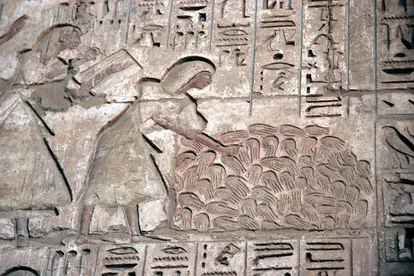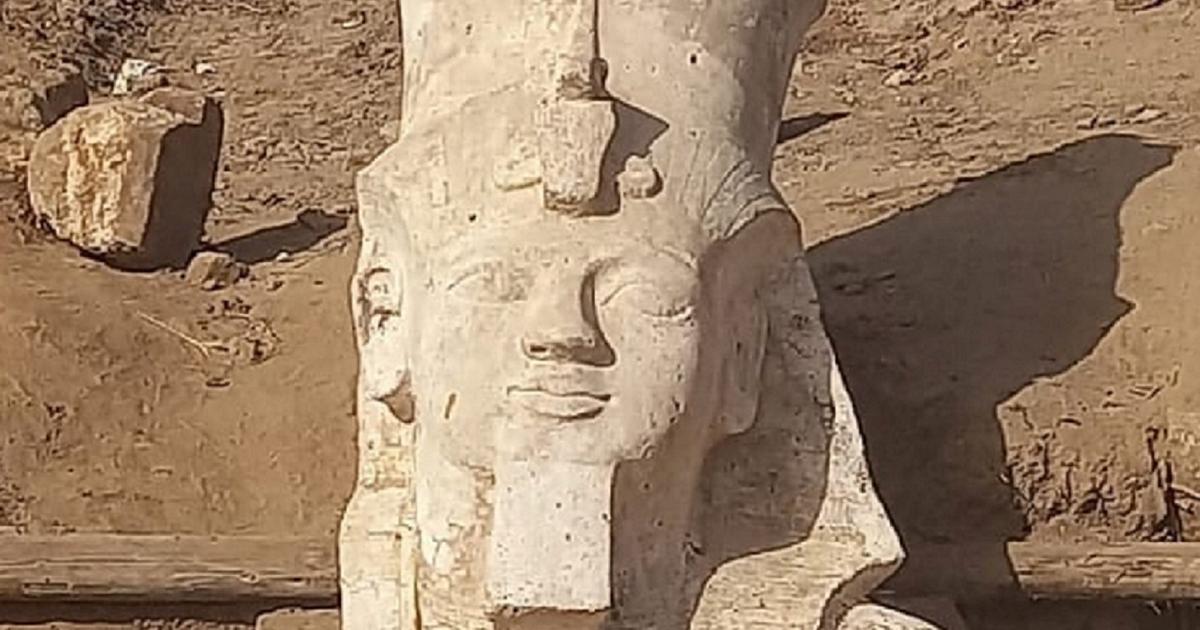One of the common warrior practices in Ancient Egypt was to cut off the hands of enemies fallen in battle as a trophy and for the more practical purpose of accurately counting their casualties.
This is attested in written documents and in reliefs in tombs and temples, such as that of Ramses III in Medinet Habu, Luxor, where soldiers can be seen carrying sacks or baskets with their hands and piling them up before the satisfied pharaoh.
The historical novel has described the custom with relish and for example in the canonical
Sinuhé the Egyptian
, by Mika Waltari, we find a fight against the khabiri (who are none other than the Jews) in which Horemheb's troops place at the feet of their commander and a statue of the lioness goddess of war Sekhmet the right hands of the dead of the enemy that form a tall macabre heap.
Some warriors, Waltari relates, bring three, four, and even five limbs dripping with blood.
The accounting of the hands gave the measure of victory and helped to determine the prizes for the value of the soldiers (gold necklaces or flies of the same material).
We find similar scenes in other novels such as
Nights of Antiquity
, by Norman Mailer, in which it is added that some soldiers who are clever are punished for cutting off the hands of prisoners or even worse, of those who fell from their own side (after all, a hand is a hand, they would say).
In this sense, the Jewish way of counting was more precise: they collected —as the Old Testament recurrently points out— the foreskins of their enemies, so there was no doubt.
It is also iconographically attested that the ancient Egyptians also collected penises on the battlefield (a relief from Medinet Habu shows this: many visitors miss it).
Another body part that was sometimes picked up was the ears: Marine practice in Vietnam was nothing new under the sun.
Although most of the essays on warfare in Ancient Egyptian mention the cutting of hands - like the canonical
War in Ancient Egypt,
by Bridget McDermott (Critique, 2006), which recalls the case of the soldier Ahmose, son of Abana , who, according to the inscription on his tomb, contributed a few hands and was rewarded with slaves and land—until now no physical evidence of the practice had been found.
More information
A UAB professor documents an unprecedented ritual with beheaded falcons in Egypt
That is why the finding, published in
Scientific Reports, is so interesting.
on March 31, from the severed right hands of 12 individuals, which were excavated from three wells in the courtyard of the throne room of a palace in the city of Avaris (present-day Tell el Dab'a, northeast Egypt). , capital of the Hyksos, rulers of the 15th Dynasty (c.1640-1530 BC).
In an article signed by Julia Gresky, Manfred Bietak, Emmanuele Petiti, Christian Scheffler and Michael Schultz, from the German and Austrian Archaeological Institutes, among other institutions, it is emphasized that osteological evidence of the practice has been found for the first time, which is coming to corroborate the epigraphic and archaeological sources.
"This is the first time that physical evidence has been found and used to learn more about the procedures and the individuals whose hands were cut off," the article states.
The bioarchaeological analysis of the hands, it is emphasized, adds a third source of evidence and provides a unique look at hitherto unknown details of the custom.
The hands, articulated and presented in such a way that it was clearly seen that they were hands, with the fingers stretched out (a rather creepy sight), were deposited in the three wells at the rate of one in the first, three in the second and eight in the third. .
In the last two there were also disjointed fingers, attributable to other hands, so that the total can rise to 18. Curiously, one seems to be a woman's.
The rest belong to men of military age, adults, but without signs of aging.
Eight of the complete hands were placed palm down and three were palm up.
They had all been painstakingly separated from the arm.
Hand count of the enemy in a relief from the temple of Medinet Habu, in Luxor.
According to the study, they were collected some time before being deposited in the wells, come on, they were not fresh, since rigor mortis had already begun.
However, they could still stretch their fingers to make more impression.
They were buried while they still had ligaments and tendons that held the bones in place.
The researchers believe that it can be asserted that the hands were cut off from the dead to settle accounts and serve as evidence for military rewards, since the amputation of hands is not attested in other contexts in Egyptian sources except in some cases of looting, when it was cut off. the hands of the mummies to snatch the jewels (this is the case of the mummy of Seti II, which is missing its right limb).
The hieroglyph for "severed hand". SCIENTIFIC REPORTS
The fact that the analyzed hands are in a well in such an emblematic place as a palace room, in front of the royal throne, suggests that they were buried during a public ceremony, perhaps the delivery of rewards for valor (decorations and gold in exchange for hands, which meant, the part for the whole, downed enemy warriors: hands as a bargaining chip to exchange for status).
The lack of cut marks indicates that there was preparation of the hands for presentation.
The limbs could not be attributed to any specific ethnic group.
Researchers believe that the practice of cutting off hands may have been introduced to Egypt by the Hyksos and later became very popular in the New Kingdom.
The Egyptians would have adopted the custom already in the time of King Ahmose, as shown by a relief of a pile of hands in his temple at Abydos.
Ahmose, it is emphasized, was the conqueror of Avaris and the one who defeated the Hyksos, "so he was able to familiarize himself with the usage".
Tomb inscriptions and temple reliefs from the Eighteenth Dynasty copiously show the counting of hands on the battlefield after fighting.
According to the study, the idea that the custom of cutting off the hands of enemies could originate in the Near East could be tested linguistically,
Subscribe to continue reading
Read without limits
Keep reading
I'm already a subscriber









